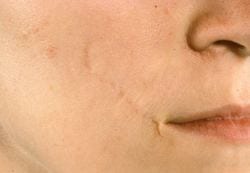6/26/06
This summer, the US Food and Drug Administration will decide whether to approve ArteFill for use as a permanent dermal filler. According to the ArteFill Web site, the product consists of microspheres suspended in a collagen gel.
“The field is expanding and is getting more complex,” says V. Leroy Young, MD, of St Louis, and chairman of the nonsurgical procedures committee for the American Society for Aesthetic Plastic Surgery (ASAPS). “People have to be very sure when they sign up that they understand the risks and benefits and what the alternatives are and how they all compare.”
If approved, ArteFill will join longer-lasting wrinkle eradicators such as Radiesse, a calcium hydroxylapatite “semipermanent” filler that is being used off-label by doctors to fill wrinkles, and Juvederm, a hyaluronic acid filler, that lasts from 6 months to 1 year.
According to ASAPS, long-lasting fillers may accelerate the trend away from facelifts, which declined in popularity in 2005.
However, the long-lasting fillers have raised concerns among some physicians. Plastic surgeons say that the marketplace is filled with inexperienced practitioners who offer the treatments in nonmedical settings and who use counterfeit products—all of which could lead to botched work, including lumpiness or lopsidedness. They add that even when injected properly, the effects of long-lasting fillers are not easy to remedy should the patient suffer an adverse reaction or dislike the result.
Young suggests that patients should try a temporary filler to see whether they like the results before using ArteFill or another long-lasting filler.
[www.latimes.com, June 26,2006]



